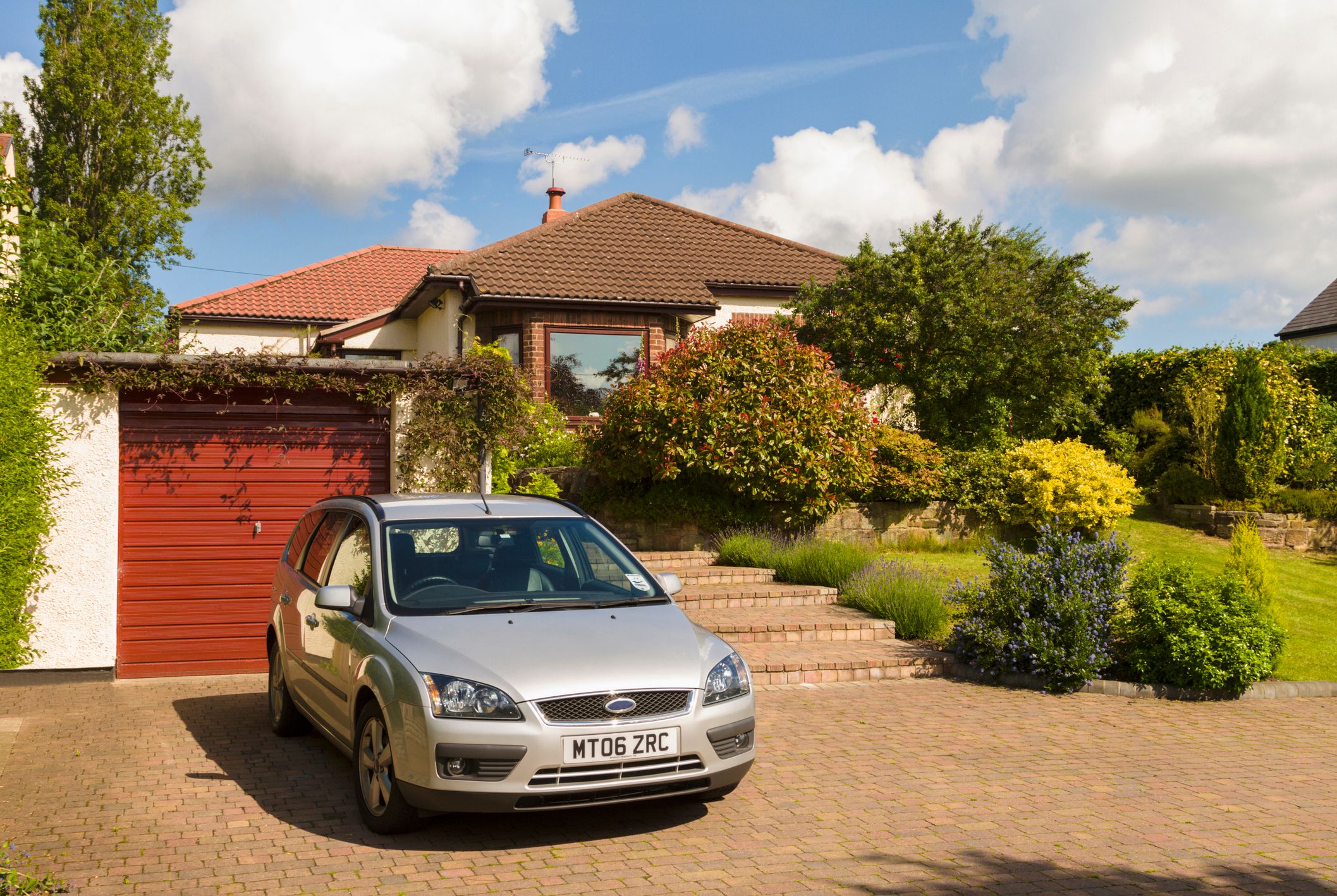Secure Your Car With The Super Car Insurance Plan!
Believe it or Not! Save upto* 75% on TATA AIG Car Insurance
Secure Your Car With The Super Car Insurance Plan!
Believe it or Not! Save upto* 75% on TATA AIG Car Insurance
Difference Between Wheel Alignment and Balancing
- Author :
- TATA AIG Team
- ●
- Last Updated On :
- 05/03/2025
Your vehicle's performance must be monitored to ensure efficiency and safety while driving. One key aspect of a car is the wheels that hold the vehicle's weight and allow easy movement in different landscapes.
For the same reason, car alignment and balancing maintenance with proper wheel alignment and balancing is integral for good performance overall. Both these services differ in nature and cater to different needs of the car care process.
The main purpose of tyre rotation balance and alignment is to correct the tyre angles and weight to allow smooth drives when they come in contact with the road.
Let us discuss wheel balancing and alignment, the difference between wheel alignment and wheel balancing, and the charges and benefits of each in this blog.
All About Wheel Alignment
Wheel or tyre alignment is a process undertaken for car maintenance. This process aims to align the car wheels in sync with the road by adjusting the angles.
The goal is to keep the alignment of each wheel parallel to one another for better stability of the vehicle on the road.
Moreover, with the maintenance of the parallel, the wheels must also be perpendicular to the road for straight driving.
Why is Wheel Alignment Important?
Often, the car wheels witness a shift in alignment due to unforeseen driving patterns and incidents that can push the alignment off significantly. Some incidents and patterns include hitting a road bump, driving for long distances regularly or daily, sharp turns, sudden breaks or acceleration demands, etc.
All these can impact the wheel alignment significantly, but as a normal occurrence, getting wheel alignment fixed is available with most car care plans.
Without wheel alignment maintenance, the following outcomes can happen.
Improper alignment can damage your car wheels in other harmful ways, demanding higher maintenance and charges.
Early wear and tear can happen if the alignment is not fixed because the pressure on the wheels will increase further, pushing their performance capacity and straining the wheels.
Drivers might witness higher road noise and vibrations in the steering wheel.
If there is uneven alignment, the balance on the road will be improper.
With improper wheel alignment, the vehicle's fuel consumption will go higher.
Different Types of Wheel Alignment
There are three common types of wheel alignment available. Each focuses on individual vehicle tyres' angles, ensuring all-round performance and efficiency.
Caster Alignment
This refers to the ability of the vehicle to remain stable on the road. With caster alignment, the steering wheel tilts are rectified by viewing whether it is forward tilt or backward when assessed from the side. This is necessary for a smooth drive.
Toe Alignment
This refers to the angle of the tyres when viewed from above. Correct toe alignment enables straight vehicle driving while limiting frequent wear and tear issues.
Camber Alignment
This refers to the angle of the tyres when viewed from the rear or front. The main assessment checks whether the angles are leaning inward or outward.
Inward is called negative camber, and outward is called positive camber. The perfect alignment will enable in-sync wear and tear of the wheels.
Signs Your Car Needs Wheel Alignment
Knowing some visible signs indicating the need for wheel alignment is important. These signs can include-
Unintentional leaning of your car towards one side of the road instead of driving in a straight manner.
Heaviness around the steering wheel on a specific side.
High vibrations on the steering wheel during acceleration.
Too much noise from the car while driving.
Uneven wear and tear of the car wheels.
Benefits of Wheel Alignment
The main benefit of wheel alignment is improved car performance and safety on the road. Some other benefits include the following:
With wheel alignment, all four wheels point in the same direction, increasing driving stability and stronger steering control.
Another benefit is even wear and tear of the four wheels, making the car tyres last longer.
Higher speeds will not increase steering vibrations, reducing discomfort while driving.
Proper wheel alignment allows better car performance due to low resistance, optimising fuel consumption and increasing fuel cost savings in the long run.
It offers a better driving experience as the correct wheel alignment will always ensure comfortable and stress-free driving.
All About Wheel Balancing
The wheel balancing process looks into the proper weight management of each tyre and the overall tyre assembling structure. With correct wheel balancing, the uneven weight distribution for each tyre is assessed and rectified.
The main purpose of wheel balancing is to increase the car's driving capacity and performance while enhancing the vehicle's stability and safety. To understand how wheel balancing works, it is important to know why it is needed.
Wheel balancing limits the chances of wheels being thicker or thinner than the other 3 wheels of the car. If this happens, the car feels heavier or lighter on one particular wheel side, and there will be increased vibration in that one specific wheel while driving.
Different Types of Wheel Balancing
Different types of wheel balancing are available today, each catering to specific needs and maintenance categories. The common ones include the following.
Static- One of the most common methods of wheel balancing is static balancing. Here, the wheel weight balance and assembly are done without spinning the wheels in motion.
The process requires a balancer, then counterweights are added to balance the wheel weight. This is popular for small tyres on passenger cars, motorbikes, etc.
Dynamic- An advanced method for wheel balancing is dynamic balancing. Here, the wheel is placed on a balancer, and then the technician spins the wheel to check balance and weight.
The calculation of the imbalances is monitored on the balancer, and then specific counterparts are added to fine-tune the wheel weight in sync with others.
Dynamic Load- This specialised balancing method caters to big and heavy-load vehicles like buses and trucks.
This process considers multiple factors like tyre wear and tear and the stress-taking ability of the wheels on the road and then balances the wheels as required to ensure safe and smooth movement.
Road Force- An advanced method of dynamic balancing is required for luxury cars and high-performance vehicles. This is called road force balancing, where the factors considered include static aspects, dynamic aspects, and an additional factor of tyre vibrations and stiffness.
This helps technicians correct hard-to-find errors in the wheel balancing that can otherwise cause strong vibrations while driving.
Detailed Process of Wheel Balancing
Wheel balancing requires precision and attention to detail. The purpose of wheel balancing is to assess the weight of each wheel and maintain uniformity for all the wheels for a smooth driving experience. The common process is as follows:
Step 1: Inspection of the Wheels
The first step of the process is to assess the tyre and its assembly by a professional technician. This is a physical assessment to spot any visible damages to the wheel parts, along with particle collections building up around the wheel body.
Step 2: Balancer
The next step is to detach the wheel from the vehicle and place it on the wheel balancer to ensure it remains constant while the assessment proceeds.
Step 3: Measurement of the wheels
The technician then enters all the necessary details regarding the wheel dimensions, like width, diameter, weight, etc.
Step 4: Required Weight Calculation
Upon completion of the manual input of dimensions, the balancer machine begins running analysis to estimate the wheel weight gap and the area which requires the upgrade.
After the analysis and report are received from the balancer, weighted balance parts are added to different parts of the wheel to balance the weight equally throughout the wheel.
Step 5: Evaluation
The next step is evaluating the wheel after adding weights in different parts to check if the wheel balance is in sync with the others for stability and performance. The desired output of this step is to witness no vibration when the wheel rotates, as that indicates correct balancing.
Step 6: Additional adjustments
If the desired result is not achieved, the wheel is back on the balancer for further balance adjustment by adding or removing weights or repositioning the wheel parts.
Step 7: Reinstallation
After final adjustments, the wheel is ready for reinstallation to the vehicle.
Step 8: Final check
The final step is to test the wheel on the road, so many technicians offer to take a test drive to see if the vehicle is functioning smoothly. After that, some technicians also provide you with a report for reference.
Signs Your Car Needs Wheel Balancing
Awareness of the signs that your vehicle requires wheel balancing is important to ensure timely adjustments. Some of the common signs include:
Your vehicle keeps moving towards one side of the road.
There is heaviness on one side of the vehicle.
The steering wheel is not stable and witnesses random shaking.
Frequent wear and tear concerns with your vehicle wheels.
At the time of new tyre purchases.
Routine maintenance after the car runs over 10,000 kilometres.
Benefits of Wheel Balancing
Knowing how it benefits the vehicle and your driving experience is necessary given the detailed wheel balancing procedure. Some common benefits are as follows:
Better wheel life as the wear and tear concerns are addressed and rectified regularly.
Increased driver safety as balanced wheels offer better control of the vehicle, ensuring no vibrations distract the driver on the road.
The pressure on the vehicle is lesser if the wheels are balanced correctly, as they reduce friction while driving, ensuring limited pressure on suspension tools.
Charges of Wheel Alignment and Balancing
The decision between wheel balancing vs wheel alignment is not difficult as both are important for maintaining the performance and safety of a vehicle.
However, having knowledge of the wheel alignment and balancing cost can help plan better. Let us look at the possible charges of both these maintenance procedures below:
** Wheel Balancing**
The charges for wheel balancing can vary for different locations, service centres, vehicle categories, etc.
However, the common range is between ₹150 - ₹300 for one wheel. The total cost, therefore, depends on the number of wheels balanced and other wear and tear adjustments completed.
** Wheel Alignment**
The charges for wheel alignment differ between 2-wheeler and 4-wheeler vehicles. For 2-wheelers, the range is usually between ₹500 to ₹800, while the 4-wheelers' cost can range from ₹1000 to ₹1500.
Other factors impacting the charges include the number of wheels aligned, location, service centre, type of alignment completed, etc.
Differences Between Wheel Alignment and Wheel Balancing
| Wheel Alignment | Wheel Balancing | |
|---|---|---|
| Main Purpose | It focuses on aligning the angles of the wheels in sync for better performance when in contact with the road. | It focuses on balancing the weight imbalances of the vehicle wheels to ensure smooth driving. |
| Benefits | Long tyre life optimised fuel consumption, better vehicle steering stability, and smooth driving experience. | Reduced wheel vibrations, better driving control, optimised fuel consumption, and reduced frequency of wear and tear of tyre |
| Types | There are 3 common types: caster, camber and toe. | There are 4 common types: static, dynamic, dynamic load, and on-road |
| Charges | Ranges from ₹1000 - ₹5000 | Ranges from ₹150 - ₹300 per wheel |
| Checking Time | It is recommended to get the alignment checked every 2-3 years | During regular tyre rotations, at the time of new wheel installation, or after 5,000-7500 kilometres |
| Duration | The alignment process takes 60 minutes or less. | The balancing process takes a minimum of 30-40 minutes per wheel and can increase based on the number of wheels. |
Conclusion
The need for tyre balancing and wheel alignment is high as it directly impacts your driving experience. For better vehicle performance, wheel alignment focuses on correcting wheel angles towards one direction. On the other hand, wheel balancing focuses on equal weight distribution for all vehicle wheels.
Both these procedures are necessary for car safety and performance, and neglecting either can harm the vehicle's performance and the driver's safety.
Investing in the right car insurance is another way to safeguard any vehicle. With a motor insurance plan of your choice, you can benefit from financial assistance in case of unforeseen circumstances that cause damages and loss of parts for your vehicle.
To find the right insurance for a car, you can choose from the various options Tata AIG offers. The car insurance policies offered cater to different needs and requirements, ensuring there is one for everyone. You can easily compare different plans on our website and complete car insurance renewal online, if needed, in just a few steps.
The top priority is to give your vehicle the best performance and safety by regularly maintaining wheel alignment and balancing for a long life. An insurance plan offers financial assistance in case of damages and losses, which increases vehicle life. Buy one for your vehicle today!
FAQS
Should I get wheel balancing or wheel alignment first?
It is recommended to complete the wheel balancing process first and then go for wheel alignment. This is because wheel balancing allows technicians to spot any underlying tyre issues in advance, making correcting wear and tear issues easier.
Is wheel balancing and alignment required for new tyres also?
Yes, getting your wheel balancing and alignment checked every time you buy and install new tyres is extremely beneficial, as this will ensure all factors are in check before you take the vehicle on the road.
Do I have to replace all 4 tyres every time?
No, the decision to replace any tyre depends on the assessment done by a technician. Based on the condition of each tyre and potential wear and tear, only those tyres with issues need to be replaced.
Disclaimer / TnC
Your policy is subjected to terms and conditions & inclusions and exclusions mentioned in your policy wording. Please go through the documents carefully.



